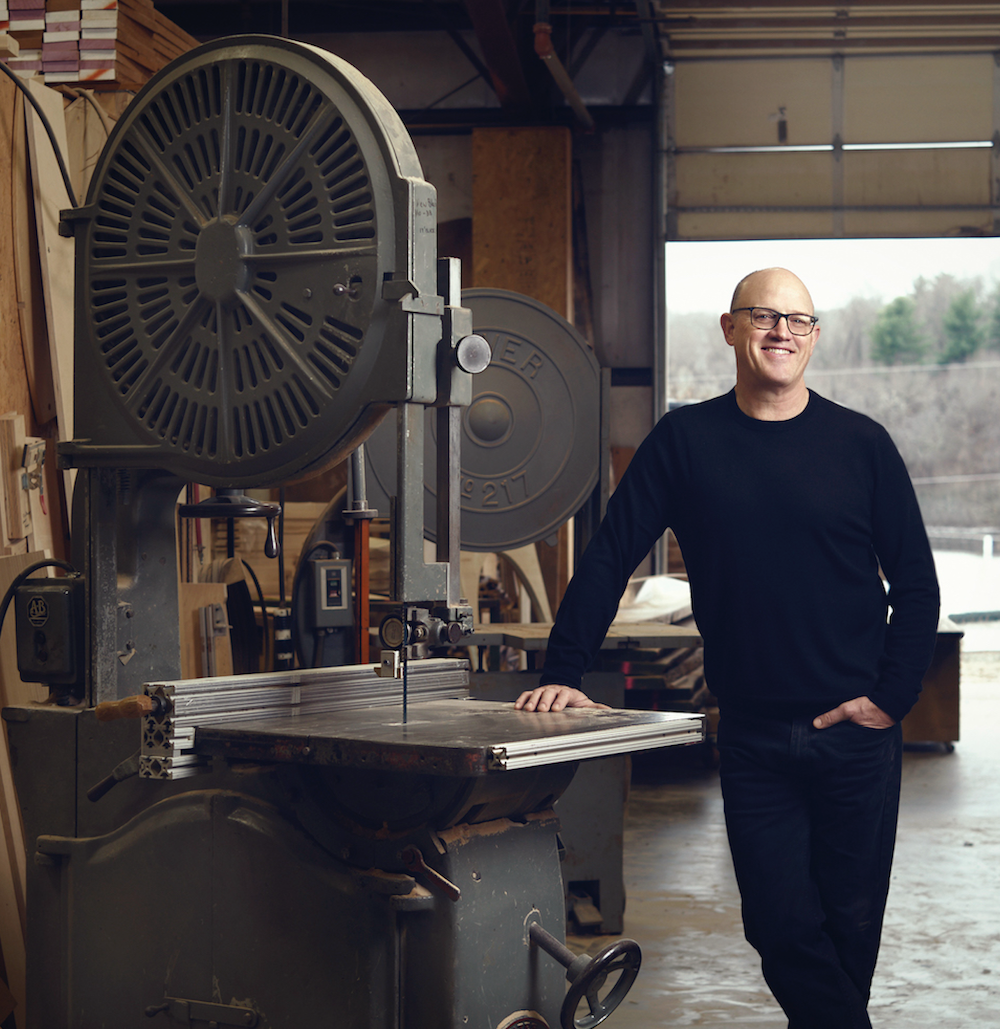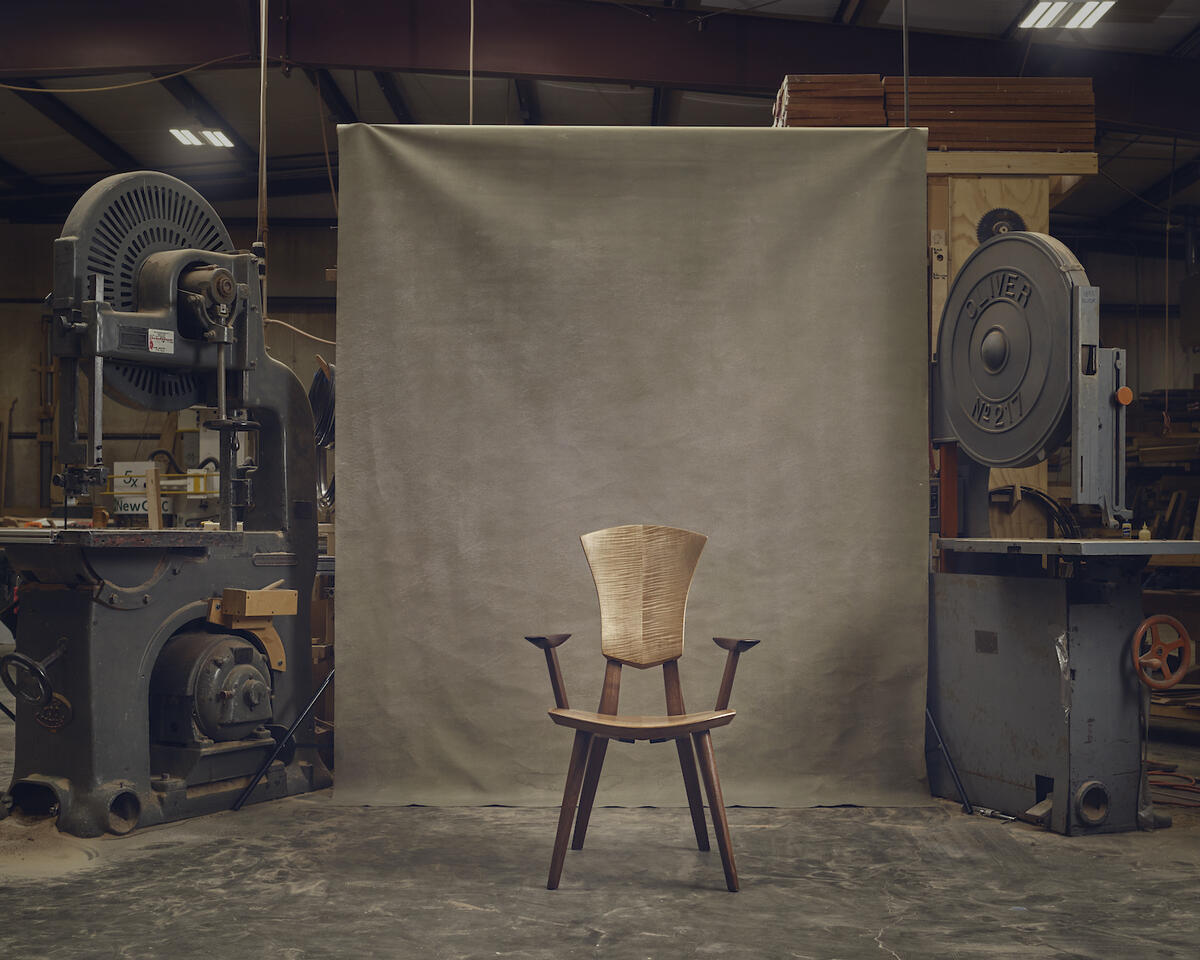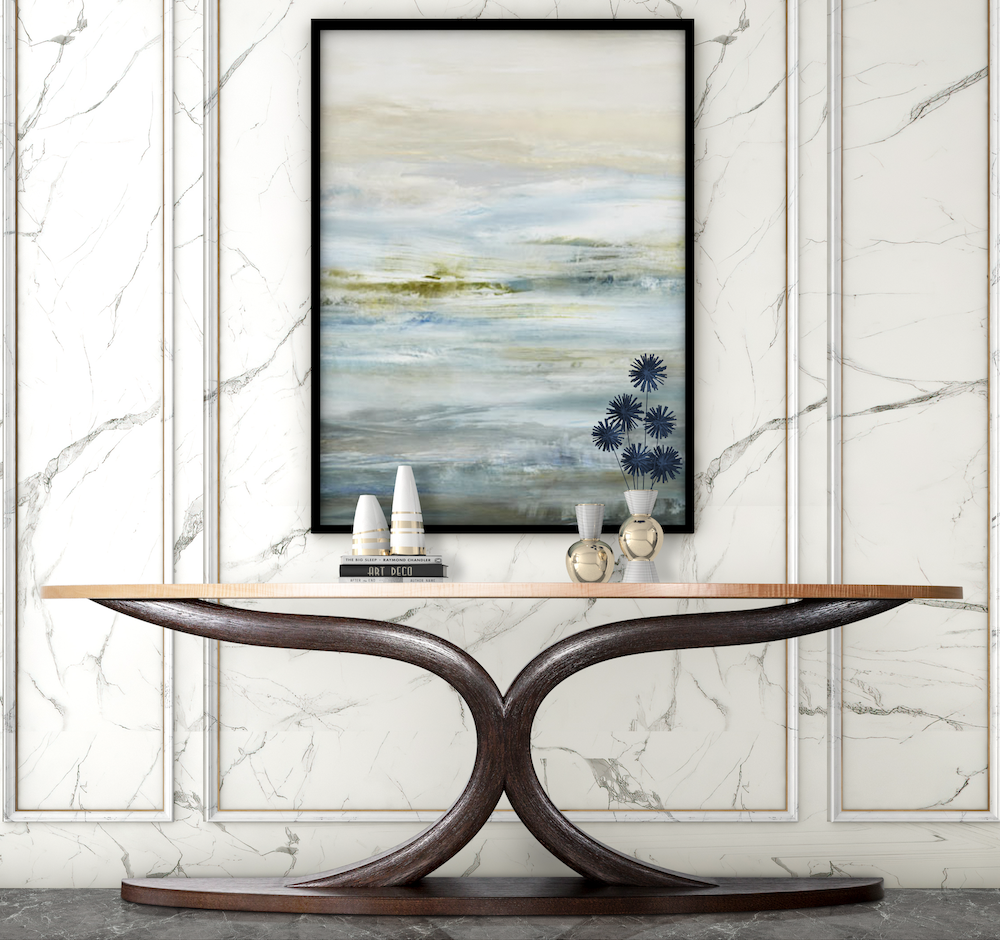When crafting furniture, Brian Boggs calls upon the wisdom of artisans who came before him. “We’re able to retain the integrity of ancient woodworkers with a perspective of modern design,” he tells Business of Home.

Growing up in North Carolina and eastern Kentucky, Boggs was surrounded by forests. As a child, he took an interest in art, and by 8 years old, began taking adult-level painting courses to hone his skills. “I look at my early paintings, and there were trees in all of them,” he says. “The idea of being able to use a plant that I was in love with as a medium for artistic expression was just intoxicating for me.”
This passion followed him to college, where he ultimately decided to drop out and teach himself woodworking. To Boggs, being a “self-taught” craftsman means learning from things that are in front of you and things you are experiencing—paying deep attention to the material and tools you work with and changing as they transform. This approach to woodworking has stayed with him for 41 years.
Boggs’s enterprise had simple beginnings: He made chairs and other furniture out of a small shop in Berea, Kentucky. It was not until he met his wife, Melanie, that a bigger picture for the business emerged. “The vision that we had was more national and somewhat global, and thinking in terms of making furniture that made a difference in people’s lives,” he says.
When the pair first met, Melanie worked in organizational development at a consulting company. Boggs later hired her company to help rebuild his business, which had been whittled down to just him and a few tools after the 2008 recession. The couple have since worked to expand the Brian Boggs Chairmakers brand into what it is today, with six employees and a shop in Asheville, North Carolina.

“Melanie brings a perspective to our business that certainly wouldn’t be there without her,” he says. “She’s got a [sense of] professionalism, she sees things I don’t, and she’s always involved in the design process.”
When it comes to crafting his chairs and other furniture, Boggs takes no shortcuts. He starts with logs rather than lumber because it gives him the opportunity to decide exactly how the trees should be cut. “The design process works to integrate everything I know about the material, about ergonomics, about structure into an experience of artistic freedom,” he says. “That allows me to follow what I’m hearing customers say, or just designs that come to me without as many limitations.”

His main goal is to make lightweight, super strong furniture that flows visually and follows the human body as perfectly as possible. The universal comment from customers is that they have never sat in such comfortable wooden chairs before. And while the company’s name pays homage to its specialty, Boggs says that the team can make just about anything: The craftsman has designed tables, cases and even a mechanical bar. “We really want to develop more long-term relationships with designers,” he says. “And it isn’t just for the volume that would bring to our business. Designers have a perspective that we don’t always get to see; they’re working with clients we’re not working with.”
To Boggs, success means having the ability to design pieces freely and continuing to serve his clients. “What we’re doing, no matter how we do it, [is] taking trees apart and putting them back together in ways that are more useful to us.”
If you want to learn more about Brian Boggs, visit his website or Instagram.




























